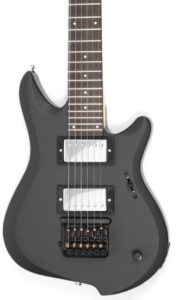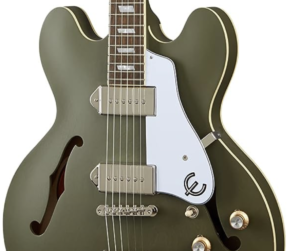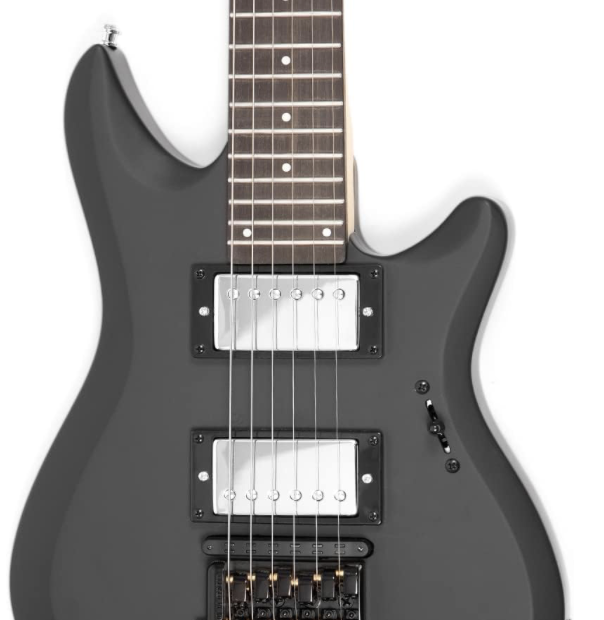Mastering the art of guitar tone is a journey that every guitarist embarks upon to define their unique sonic signature. Achieving the perfect guitar tone involves a combination of gear, technique, and personal preference. In this exploration, we’ll delve into various tips and tricks that can help you discover and refine your distinctive sound.
Understanding Your Gear
 Understanding your gear is a fundamental aspect of mastering the art of guitar tone. Your gear comprises various components, each contributing to the overall sonic landscape you create. Start by getting acquainted with your guitar – study its body type, wood construction, and pickup configuration. Different guitars have distinct tonal characteristics, and understanding these nuances helps you make informed decisions about how to shape your sound.
Understanding your gear is a fundamental aspect of mastering the art of guitar tone. Your gear comprises various components, each contributing to the overall sonic landscape you create. Start by getting acquainted with your guitar – study its body type, wood construction, and pickup configuration. Different guitars have distinct tonal characteristics, and understanding these nuances helps you make informed decisions about how to shape your sound.
Beyond the guitar, delve into the capabilities of your amplifier. Amplifiers come in various types, such as tube, solid-state, and modeling amps, each offering unique tonal qualities. Experiment with the controls on your amplifier, including gain, EQ, and reverb, to discover how each parameter influences your tone. Pay attention to the wattage and speaker configuration of your amp, as these factors play a crucial role in shaping the overall sound. Familiarize yourself with the amp’s channel options, as they can provide a range of clean to distorted tones, expanding your sonic palette.
Effect pedals are powerful tools for sculpting your guitar tone, and understanding how they interact with your gear is key. Each pedal introduces specific colors and textures to your sound. Experiment with the order of your pedals in the signal chain to find the most pleasing combination. Learn about the various types of pedals, such as overdrive, distortion, delay, and modulation, and understand how they can enhance different aspects of your playing. As you explore your gear, take note of how changes in settings and configurations impact your overall sound, empowering you to make intentional choices in crafting your unique guitar tone.
Also Read:
8 Best Octave Pedals for Your Guitar
10 Best Flanger Guitar Pedals for 2024
10 Best Semi-Hollow Body Guitars
10 Best Electric Guitar Pickups
Playing Technique
 Your playing technique is a cornerstone of your individual style and plays a pivotal role in shaping your guitar tone. Experimenting with different picking techniques can yield a wide array of tones. The strength and angle of your pick attack, as well as whether you use your fingers, a pick, or a combination of both, all contribute to the nuances of your sound. Adjusting your picking dynamics can range from producing soft, mellow tones to creating aggressive, powerful sounds. Delve into various techniques like palm muting, alternate picking, and fingerstyle to discover how they influence the character of your playing.
Your playing technique is a cornerstone of your individual style and plays a pivotal role in shaping your guitar tone. Experimenting with different picking techniques can yield a wide array of tones. The strength and angle of your pick attack, as well as whether you use your fingers, a pick, or a combination of both, all contribute to the nuances of your sound. Adjusting your picking dynamics can range from producing soft, mellow tones to creating aggressive, powerful sounds. Delve into various techniques like palm muting, alternate picking, and fingerstyle to discover how they influence the character of your playing.
Exploring the controls on your guitar is another aspect of refining your playing technique. The volume and tone knobs on your instrument are powerful tools for shaping your sound. Experiment with rolling back the volume knob for cleaner tones and gradually increasing it for added gain and intensity. Similarly, adjusting the tone knob can impact the brightness or warmth of your sound. Developing a dynamic approach to using these controls in real-time while playing adds a layer of expressiveness to your technique, allowing you to sculpt your tone on the fly.
Understanding the impact of your playing technique on your guitar tone extends to how you interact with the guitar’s fretboard. Experiment with different positions on the fretboard, playing closer to the bridge for a brighter sound or nearer to the neck for a warmer tone. Vary your vibrato and bending techniques to add character to your notes. Additionally, explore the impact of finger placement on the strings and experiment with different string gauges to find a balance that suits your playing style. By honing your playing technique, you not only enhance your expressiveness as a guitarist but also gain a deeper understanding of how your unique approach contributes to the overall tapestry of your guitar tone.
Exploring Amplifiers and Amp Settings
Your amplifier is the heart of your tone. Experiment with various amplifiers to find one that complements your playing style. Additionally, explore different amp settings, adjusting parameters like gain, EQ, and reverb to sculpt your desired sound.
Effect pedals offer a vast palette of sonic possibilities. Experiment with different pedals and their placement in your signal chain to create a unique combination that suits your preferences. Consider the impact of distortion, delay, reverb, and modulation on your overall tone.
Customizing Your Guitar
Customizing your guitar is a transformative process that allows you to tailor the instrument to your specific preferences and playing style. One common customization is changing the pickups. Pickups are crucial components that capture the vibrations of the guitar strings and translate them into an electrical signal. Upgrading your pickups can significantly impact your tone, providing options for greater clarity, warmth, or even more aggressive output. Whether you opt for single-coil, humbucker, or other specialized pickups, this customization allows you to shape your guitar’s sonic characteristics to better match your musical vision.
Modifying the wiring and electronics of your guitar is another avenue for customization. Experimenting with different potentiometers, capacitors, and wiring configurations can result in subtle or dramatic changes to your tone and control options. For instance, adjusting the tone capacitor values can influence the brightness or warmth of your sound. Additionally, installing a push-pull or push-push potentiometer allows for coil-splitting on humbuckers, expanding your tonal palette further. Customizing your guitar’s electronics not only empowers you to fine-tune your sound but also adds versatility to your playing.
Beyond electronic modifications, changing the hardware of your guitar can impact both aesthetics and functionality. Upgrading tuners, bridges, and nuts can enhance tuning stability and sustain. Experimenting with different materials for these components, such as bone or graphite for the nut, can contribute to a more resonant and responsive instrument. Moreover, customizing your guitar with unique finishes, inlays, or even personalized graphics allows you to make a visual statement, turning your instrument into a reflection of your artistic identity. Customization is a journey of exploration, enabling you to craft a guitar that is not only an extension of your musical expression but also a unique piece of art.
Ear Training
Developing a keen ear is crucial for crafting your ideal tone. Train yourself to identify different frequencies, tonal characteristics, and nuances in your playing. This awareness will empower you to make more informed decisions when shaping your sound.
The choice of guitar strings can significantly influence your tone. Experiment with various string gauges and materials to find the balance that suits your playing style. Thicker strings may provide a fuller sound, while lighter strings can enhance playability.
Room Acoustics and Mic Placement
Pay attention to the environment in which you play or record. Room acoustics and mic placement can profoundly affect your tone. Experiment with different room setups and microphone positions to capture the nuances of your sound accurately.
When recording, explore different mic placements and techniques to capture the essence of your guitar tone. Experimenting with close miking, room miking, and stereo techniques can result in diverse and captivating recordings.
Ultimately, mastering your guitar tone is a personal journey. Trust your instincts and let your unique musical identity shine through. Use the tips and tricks you’ve learned as a foundation, but don’t be afraid to break the rules and push the boundaries to discover your signature sound.
